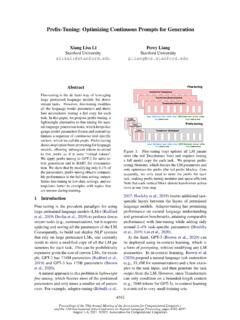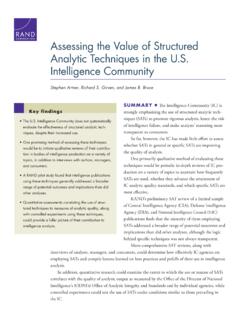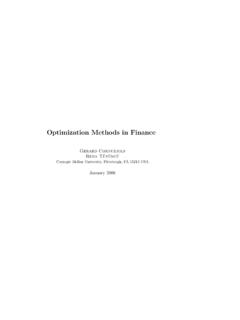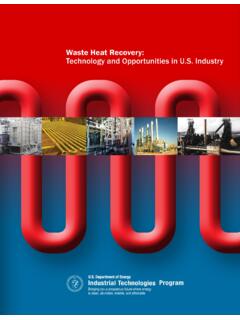Transcription of International De/Anti-icing Chapter
1 International De/Anti-icing Chapter 1 FOREWORD. The International De/Anti-icing Chapter is only a portion of the FAA approved De/Anti-icing program and does not cover detailed flight crew or dispatcher procedures. This Chapter covers International De/Anti-icing differences associated with local procedures accomplished by third party deicing providers. Third party providers may use all procedures from the main approved De/Anti-icing manual or substitute differences contained in the International De/Anti-icing Chapter . This Chapter is divided into four sections: Procedures Section The Procedures Section contains information on De/Anti-icing fluid handling and storage, De/Anti-icing operations, De/Anti-icing equipment, De/Anti-icing coordination and no spray diagrams.
2 Training Section The Training Section contains information on De/Anti-icing training, training fundamentals and an example training plan. Quality Control Section The Quality Control Section contains information on De/Anti-icing quality control and De/Anti-icing Vendor Audit checklists. Reference Section The Reference Section contains information on aerodynamics, weather, health and safety, De/Anti-icing fluids, abbreviations and refences. August 2008 Page 1. International De/Anti-icing Procedures Section TABLE OF CONTENTS. 1 DEICING/ANTI-ICING 2. DEICING FLUIDS ..2. Fluid handling and Laboratory DEICING/ANTI-ICING OPERATIONS.
3 7. GENERAL ..7. PRELIMINARY WORK FOR THE START OF DEICING/ANTI-ICING ..7. Determining the need for Critical SPRAY AREAS ..9. Aircraft surfaces ..9. Spray methods , fluid application and alternate Inspecting sprayed areas ..14. DEICING/ANTI-ICING COMMUNICATION ..15. Releasing/Dispatching aircraft and final walk-around ..15. Flight crew information ..16. INTERPRETING DEICING/ANTI-ICING FLUID AND HOLD-OVER-TIME TABLES ..19. LOCAL FROST PREVENTION ..20. Manual deicing ..20. Precautionary measures ..21. ALTERNATIVE DEICING/ANTI-ICING methods ..21. 2 OFF GATE DEICING/ANTI-ICING OPERATION.
4 22. AIRPORT Precautionary measures ..22. SAFETY AREAS ..23. DEICING/ANTI-ICING PROCEDURES ..23. Deicing/anti-icing spray- and operational Pre- and post- deicing/anti-icing checks ..24. MANAGEMENT OF THE CENTRALISED DEICING/ANTI-ICING OPERATION ..25. 3 AIRCRAFT TYPES .. 26. CONSIDERATION OF AIRCRAFT VARIATIONS ..26. Aircraft no-spray areas in general ..26. Jet-aircraft vs. propellers ..26. COMMON AIRCRAFT TYPES AND DESIGN ..27. Precautions with aircraft 4 4 DE-ICING/ANTI-ICING 28. VARIATIONS OF DEICING/ANTI-ICING EQUIPMENT ..28. Equipment safety precautions ..28. Operational use of equipment and quality control.
5 28. Equipment communication Equipment fluid use and spray Data 5 DEICING/ANTI-ICING COORDINATION .. 31. GENERAL ..31. MANAGEMENT OF DEICING/ANTI-ICING Coordination Communication procedures ..31. Safety considerations ..32. Airport layout and local compliance ..32. August 2008 Page 1 of 36. International De/Anti-icing Procedures Section 1 Deicing/Anti-icing Fluids Deicing fluids The fluid must be accepted (among others) according to its type for holdover times, aerodynamic performance and material compatibility. The colouring of these fluids is also standardised on newer fluids. Glycol in general is colourless; as can be seen with older certified fluids when colouring was not standardised (older generation Type-I and Type-II).
6 Currently orange is the colour for Type-I fluids, water white/pale straw (yellowish) is the colour for Type-II fluids and green is the colour for Type-IV fluids. The colour for Type-III fluid has not yet been determined. In general deicing/anti-icing fluid may be uncolored if so requested. For additional fluid requirements see Reference Section paragraph Fluid handling and storage Fluid handling is an important part of the deicing operational process. The acceptance of fluids shall include such items as the fluid quality testing, certificates of conformity, batch and shipment documents etc.
7 (ref. quality procedures). Before filling the tank with the deicing/anti-icing fluid it shall be established that the brand name and the concentration of the product mentioned in the packing list corresponds to the brand name and the concentration mentioned in the storage tank. A sample of the delivered product shall be taken and checked from each batch before the storage tank/vehicle is filled. Perform the delivery check for fluids as follows (ref. quality testing): Type I fluid: a) Perform a visual contamination check b) Perform a refractive index check Type II, III and Type IV fluids: a) Perform a visual contamination check b) Perform a refractive index check The idea of the visual check is to identify the correct colouring and look for any particles of dirt, rust or other substances that should not be in the fluid.
8 The refractive index check is a check to identify the correct mixture rate as to have a correct freezing point for the fluid. This can also be directly identified with a freezing point check of the fluid. The other point is to have the correct fluid mix as freezing point and aerodynamic problems may appear if the fluid is too lean or strong respectively. Apart from quality testing, there are some basic rules to follow with the storage of fluids: a) Different products shall not be mixed without additional qualification testing and fluid manufacturer approval. b) Tanks dedicated to the storage of deicing/anti-icing fluids shall be used.
9 C) Storage tanks shall be of a material of construction compatible with the deicing/anti-icing fluid, as specified by the fluid manufacturer. d) Care should be taken to avoid using dissimilar metals in contact with each other, as galvanic couples may form and degrade thickened fluids. e) Tanks shall be conspicuously labelled to avoid contamination. f) Tanks shall be inspected annually for corrosion and/or contamination. If corrosion or contamination is evident, tanks shall be maintained to standard or replaced. g) To prevent corrosion at the liquid/vapour interface and in the vapour space, a high liquid level in the tanks is recommended.
10 H) The stored fluid shall be checked routinely to insure that no degradation/contamination has occurred. August 2008 Page 2 of 36. International De/Anti-icing Procedures Section Pumping and heating Deicing/anti-icing fluids can show degradation caused by excessive mechanical shearing. Therefore only compatible pumps and spraying nozzles shall be used. The design of the pumping systems shall be in accordance with the fluid manufacturer's recommendations. Deicing/anti-icing fluids shall be heated according to the fluid manufacturer's guidelines. For Type I fluids, water loss may cause undesirable aerodynamic effects.
















